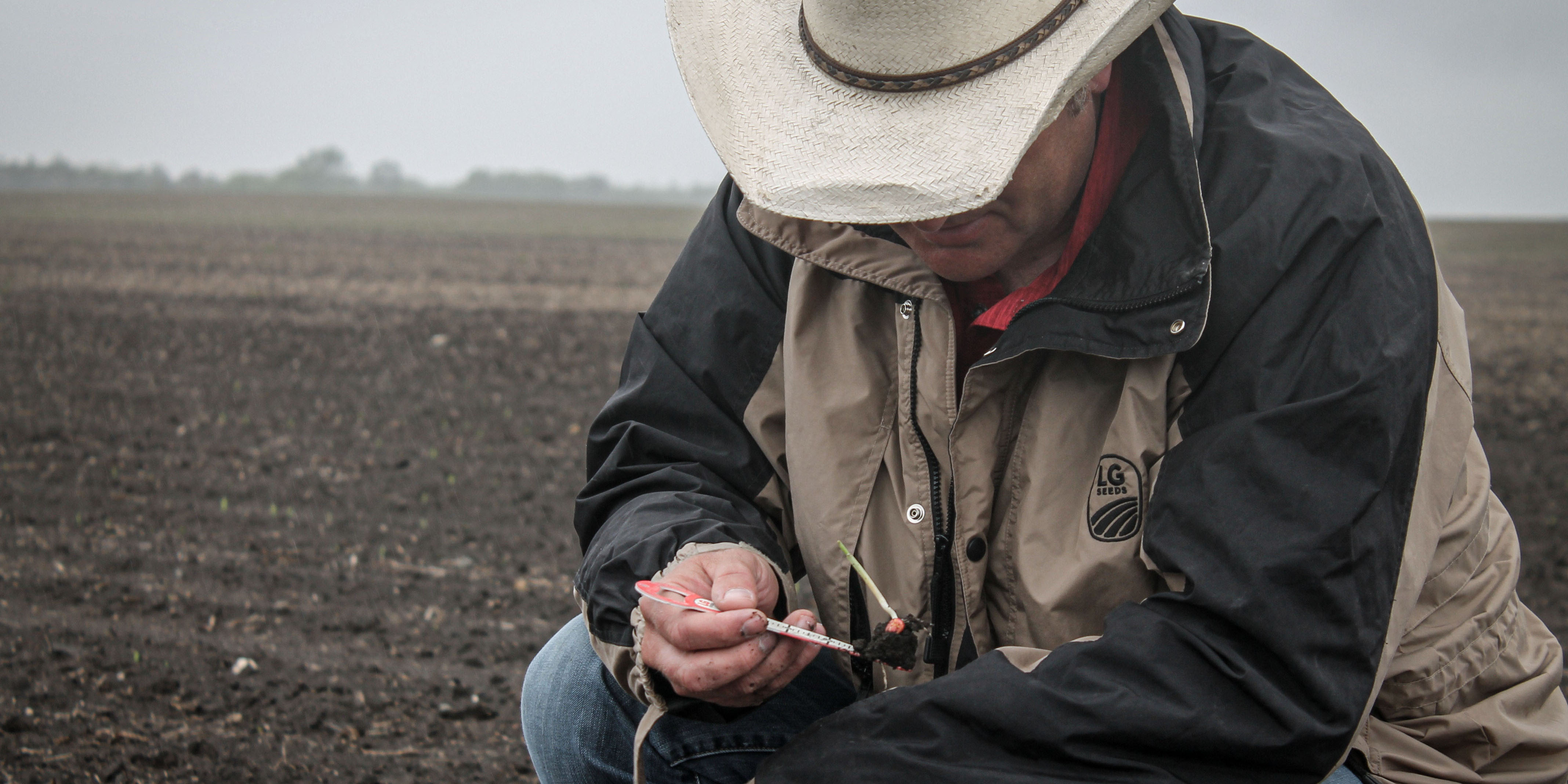AGRONOMICSUPPORT
YOU CAN TAKETO THE FIELD
Nip it in the Bud: Early-Season Pests and How to Manage Them
Farming: pretty simple, right?
Plant seeds, wait for them to grow, and harvest a successful crop—piece of cake.
But as a producer, you know this process is far from easy. Between disease/insect pressure, crop nutrient needs, and the weather (ah, yes…the weather…), farmers face many challenges.
But as your reliable partner in the field, LG Seeds is here to help you tackle some of those challenges. With planting season well underway, let’s walk through one of the first issues many farmers will face: early-season pests.
Seedling pests can take a healthy new plant and turn it into a major management problem (and a big yield loss). Broken down by crop, here are a few to look out for:
Corn
Seed Corn Maggots:
Common in fields with high residue or manure applications, these pesky critters favor cool/wet weather and feed directly on the seed, destroying its chances at germination. They’re more common with corn, but can also harm soybeans.
White Grubs:
“C” shaped, white with a brown head, and an absolute menace. These May/June beetle larvae will destroy your corn crop—and could even impact soybean fields too.
Black Cutworms:
Although warmer temperatures can force these pests deeper into the ground (resulting in less plant damage), cooler temperatures often lead to more cutworm activity. Smaller plants can be completely cut off from the seed, and these critters can even pull small plants down into the soil. If you grow sorghum, keep an eye out for cutworms there too.
Soybeans
Soybean Aphids:
These tiny, pear-shaped insects are yellow or light green, and typically live on the underside of the leaf. An infestation can lead to fewer nodes—thus fewer bean pods.
Bean Leaf Beetle:
This insect is dark yellow with a black triangle just behind its head. Adults that have overwintered like to feed on stems and leaves of seedlings and can also transmit bean pod mottle virus.
Sorghum
Wireworms:
A common sight when the weather turns cold after early planting, this click beetle larva is often found in grassy areas. It drills a hole through the seed before moving on to the next plant. (And that goes for sorghum, corn, and soybeans.)
Billbugs:
Also a problem for corn crops, this weevil chews holes in the base of plant stems. It’s sometimes associated with nut sedge, which can serve as an alternative plant host.
Manage and Control Early-Season Pests
Now that you’re on your way to being a seedling pest expert, how can you manage and control these yield suckers? We’re glad you asked.
Consider Your Crop:
Different crops have different “best practices.” For example, planting sorghum early often results in less insect trouble. Work with your LG Seeds agronomist to determine the best practices for your crops.
Start Scouting Now:
Get into your fields soon after your crop emerges so you can detect problems early. Walk across a large area in a zigzag pattern and look for issues. Wilted/discolored plants, missing/cut-off plants, and feeding holes in crop leaves may all indicate pests.
Rotate Your Crops:
Crop rotation has a lot of benefits, especially pest control. Insects and their larvae like a routine (don’t we all?), and planting the same crop over and over guarantees a meal next spring.
Select the Best Hybrids/Varieties and Seed Treatments:
You have a lot of seed options. When you choose which to plant, don’t forget to consider disease and insect pressure. At LG Seeds, we offer a wide variety of corn, soybean, and sorghum hybrids/varieties to suit your needs, along with top-of-the-line seed treatments to protect your investment.
At LG Seeds, we are committed to your success—season after season. Contact your LG Seeds agronomist today, and we’ll help you protect your crops and make the best management decisions for your farm.






Agronomy Team